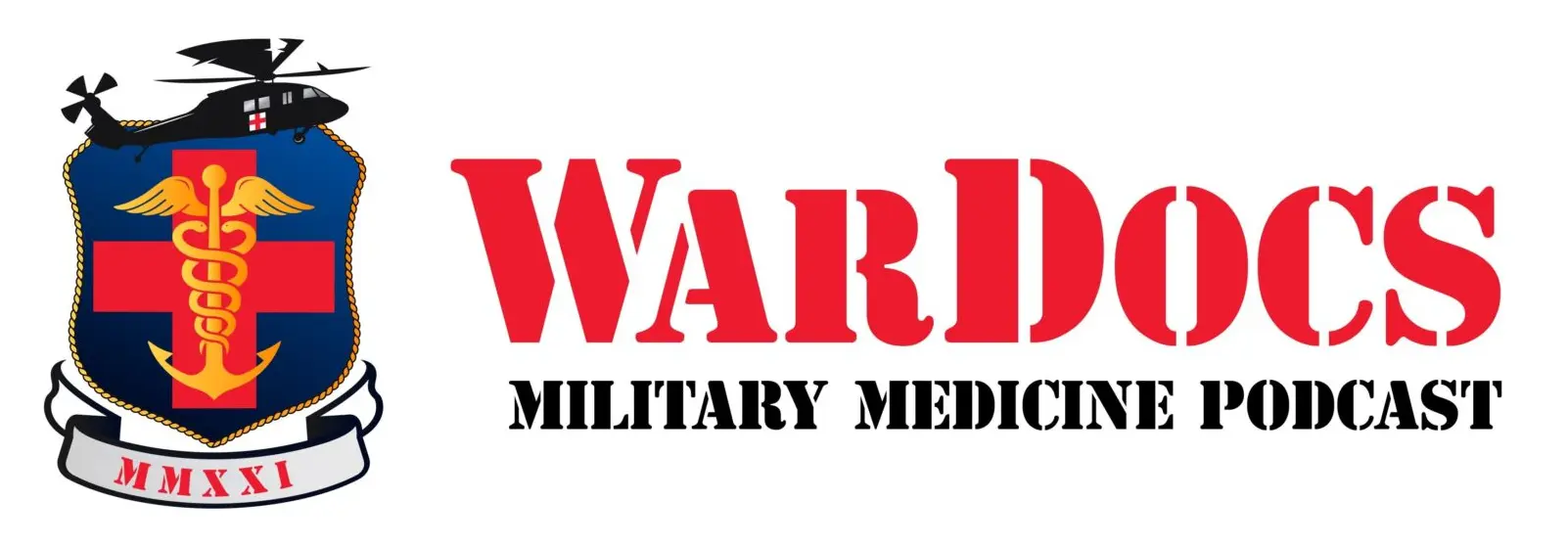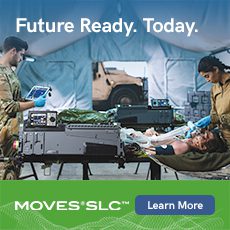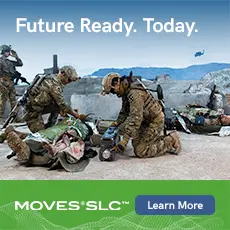Projecting Power Through Capability Delivery
MG Gavin A. Lawrence
Commanding General
Military Surface Deployment and Distribution Command
From Armor & Mobility, Fall 2022
Major General Lawrence graduated from the United States Military Academy (USMA) in 1995 and upon graduation was commissioned as a Second Lieutenant in the U.S. Army Quartermaster Corps. MG Lawrence has held several key staff and joint assignments including Supply & Services Officer, Combined Joint Task Force-82 (Afghanistan); Support Operations Officer, 782nd Brigade Support Battalion, 4th Brigade Combat Team, 82nd Airborne Division, Fort Bragg, NC; XO to the Deputy Chief of Staff, G-4, Headquarters Department of the Army, Pentagon, Washington D.C.; and Director of Readiness, Strategy and Operations, Office of the Deputy Chief of Staff, G-4, Headquarters Department of the Army, Pentagon, Washington D.C.
MG Lawrence’s command assignments include the Headquarters and Distribution Company for 225th Forward Support Battalion, Division Support Command, 25th Infantry Division (Light) at Schofield Barracks, Hawaii; the 801st Brigade Support Battalion, 4th Brigade Combat Team, 101st Airborne Division (Air Assault) at Fort Campbell, KY; the 25th Sustainment Brigade, 25th Infantry Division at Schofield Barracks, HI and Commander, Defense Logistics Agency Troop Support, Philadelphia, PA.
MG Lawrence, Commanding General of the U.S. Army’s Military Surface Deployment and Distribution Command (SDDC), spoke with A&M about some of the command’s current mission foci, including efforts to assist U.S. ally Ukraine in its ongoing war effort.
A&M: Describe your role as the new SDDC commanding general and the command’s primary mission focus areas as you see them today.
MG Lawrence: I am exceptionally grateful to have been given the opportunity to lead SDDC. This command executes an extremely challenging and diverse mission set and I’m proud to lead such a professional and talented workforce. Although I have not had any previous assignments with SDDC, I’ve been on the receiving end of the responsive support this command provides and have experienced the incredible capabilities SDDC brings to the table in support of our Joint Warfighters.
As both the Army Service Component Command to U.S. Transportation Command and a Major Subordinate Command to Army Materiel Command, SDDC is responsible for the synchronization and integration of surface transportation capabilities to ensure the projection of combat power and sustainment capability on time and on target in support of combatant command requirements. This is accomplished primarily through our five active-duty transportation brigades, each of which are aligned to a geographic COCOM, that essentially pitch and catch combat power and sustainment cargo while leveraging DoD capabilities and our global transportation contracts with commercial industry. To put it another way, SDDC moves military equipment and cargo by surface, whether it be by truck, rail, ship, or other conveyance. We deliver capability, lethality, combat power, and sustainment to the Joint warfighter.
In support of large-scale mobilization, those five brigades grow to nine total force brigades and one Expeditionary Rail Center through the activation and mobilization of SDDC’s Reserve component force, the Deployment Support Command.
A&M: SDDC delivers integrated and synchronized global deployment and distribution capabilities throughout the world. How has SDDC been involved in support of Ukraine and our Allies in Europe?
MG Lawrence: SDDC projects combat power anywhere in the world to assure our allies and deter our enemies by using our organic capability and the support we receive from our commercial industry partners. Over the past months, SDDC has executed several Presidential Drawdown missions providing support to Ukraine and our allies in Europe including moving cargo and ammunition from several U.S. ports, as well as larger ammunition movements from our Military Ocean Terminals. In our support to Ukraine, SDDC has moved cargo on 31 vessels, 89 trains, and over 1,800 commercial trucks. With all of that transportation power, we also delivered over 950 containers of ammunition, as well as additional mobility and combat platforms, to allied nations in support of global deterrence.
A&M: From a domestic movement support perspective, how has SDDC supported recent humanitarian crisis response efforts across the nation?
MG Lawrence: The most obvious example I can provide is the command’s role in the whole of government response to the COVID-19 pandemic where SDDC and our commercial industry partners successfully mitigated COVID risks to continue the safe execution of movements globally. Key highlights include the consistent movement of 1,500 commercial trucks on any given day, despite the driver shortage and limitations caused by COVID. Even while the global supply chain was congested, SDDC still executed 70 vessel operations during the height of the pandemic in 2021. In a normal year, we average about 80 Brigade Combat Team or equivalent-sized movements annually; with COVID conditions, we still moved 57 BCTs during the calendar year and continued conducting global operations that included delivering almost 28,000 equipment items, utilizing 23 CONUS and 45 OCONUS seaports, in support of six combatant commands.
Another operation SDDC played a role in supporting was the Afghanistan retrograde. While most of the cargo coming out of the theater was moved via airlift, our team was involved in supporting movement operations here in the States. We also mobilized personnel for Task Force Eagle to support safe-haven operations and supported the booking and contracting of sustainment cargo.
A&M: SDDC provides global end-to-end deployment and distribution services to support our nation’s Joint warfighters. Are there any recent SDDC missions that have been game-changers?
MG Lawrence: The Army moves to overseas locations primarily through strategic sealift, with about 80% of its deployed capabilities moving via ocean vessels. To support these movements, SDDC oversees the strategic seaport program where, in coordination with the Department of Transportation and Department of Defense, we maintain oversight for the readiness of port infrastructure as well access to stevedore and related terminal services to facilitate upload and download of equipment at these ports. Included within the strategic seaport program are 24 military and commercial ports in the U.S. and over 180 overseas ports where we conduct operations.
In addition to seaport operations, the use of rail transport is one of our key transportation enablers. Last year we coordinated approximately 270 train movements pulling 17,500 railcars worth of cargo and equipment. This capability will be critical in a conflict situation where to meet surge requirements, more than 70% of joint force equipment and cargo will move by rail from the forts to the ports. Our commercial rail partners work extensively to survey and maintain the readiness of the strategic rail corridor network and coordinate as required with law enforcement for physical security requirements. SDDC owns about 1,900 specialized DOD rail cars that are capable of handling larger military equipment such as tanks.
A&M: Feel free to speak to other achievements or goals SDDC has moving forward.
MG Lawrence: Port diversification is an important focus area for the command. SDDC uses several key ports for the movement of equipment and cargo in each theater, however as we continue to use those same ports, they could become targets in times of war. To help reduce this risk, we have built redundancy into our logistics network by expanding and diversifying the different ports we operate through. This proved helpful when our support to Ukraine began, as our units in Europe had already cultivated and maintained exceptional working relationships with alternate ports, paving the way for a possible shift in operations should the need arise. As we expand our global network, these additional ports will play a key role in future operations.
As previously mentioned, the Deployment Support Command is SDDC’s Reserve component force. The DSC provides a force multiplier for large-scale movements by adding an additional 2,600 Soldiers to SDDC’s ranks in the form of port operators and system managers. In simple terms, the DSC allows SDDC to open additional ports during contingencies or run existing strategic ports at 24-hour operations. While the command’s active-duty brigades are globally positioned to execute their missions, a substantial increase in required cargo volume could extend beyond the scope of their capabilities, requiring the addition of DSC’s Reserve Soldiers to augment and strengthen critical ports at key points in our operations. Looking forward, I plan to use these elements further to ensure they are ready to support global operations when the need arises. Of note, the DSC just successfully completed their annual Trans-Mariner validation exercise in June, ensuring they are fully prepared to conduct operations.
Another important effort the command is working on, along with its Transportation Engineering Agency, is railcar modernization. Movement by rail is a critical factor in large-scale surface movements and many cars in the DOD railcar fleet, previously mentioned, are nearing the end of their lifecycle. As we look at equipment modernization within the DOD, many platforms are becoming larger and heavier, and civilian railcars cannot support these changes with organic assets. Our team is in the process of planning and designing a new generation of railcars that are not only capable of handling the new weight and size requirements but will also include additional improvements to make them more flexible and agile as the Joint Force continues to modernize.
Finally, SDDC possesses unique capabilities to assist and train units with tasks associated with their Deployment Discipline programs. Our Deployment and Distribution Support Teams (DDSTs) have the capability to assist units with deployment planning and completion of administrative tasks such as building unit deployment lists (UDLs). They also have the expertise to assist units with outload tasks such as blocking, bracing, and equipment tie-down. By teaching and assisting units in oversight of these actions, our DDSTs can help build the proficiency needed within our units to deploy, fight, and ultimately win. It’s one thing to be trained and ready when you’re sitting at your post, camp, or station – that’s tactical readiness.
But true strategic readiness is our ability to project power anywhere at the time and place of our choosing. That is what makes our force the best in the world.























